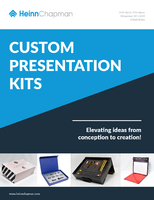IAg Plating Standard establishes max deposit thickness.
Share:
Press Release Summary:
IPC - Association Connecting Electronics Industries® released IPC-4553A, Specification for Immersion Silver Plating for Printed Boards, which sets requirements for the use of immersion silver (IAg) as a surface finish for printed boards. It adds max deposit thickness based on performance criteria, whereas min thickness requirement was provided in the original release (IPC-4553). Revision A also establishes a single thickness range to avert confusion between thin and thick.
Original Press Release:
Revised IPC Standard on Immersion Silver Plating Establishes Maximum Deposit Thickness
BANNOCKBURN, Ill., USA, June 16, 2009 - IPC - Association Connecting Electronics Industries® today released IPC-4553A, Specification for Immersion Silver Plating for Printed Boards. This newly revised specification sets the requirements for the use of immersion silver (IAg) as a surface finish for printed boards, adding a maximum deposit thickness based on performance criteria; the minimum thickness requirement was provided in the original release of IPC-4553. Revision A also establishes a single thickness range to avert confusion between what is "thin" and "thick."
"While the maximum thickness requirement may seem like a relatively simple item to generate, it took a great deal of effort on the part of the 4-14 Plating Processes Subcommittee to define the hard number of what the maximum thickness can be to produce a high quality surface finish," says Subcommittee Co-chair Gerard A.O'Brien, president, Solderability Testing & Solutions, Inc. O'Brien notes that the lack of a maximum thickness requirement in the original release of the document in 2005, confounded with the "need to know" of whether the IAg being used was of the "thin" or "thick" variety, could easily mislead a user to apply the finish outside its optimum process window. He adds, "This, in turn, could result in an inferior finish quality that would not perform adequately during subsequent assembly."
Addressing the misunderstandings of "thin" vs. "thick," Revision A establishes a single thickness range. As Subcommittee Co-chair George Milad, national accounts manager for technology, Uyemura International Corp., explains, "What was formerly termed 'thin' is no longer recognized or addressed in IPC-4553A. 'Thin' immersion silver has declined to such a minor portion of the total immersion market that delineating two thickness ranges just exacerbated the confusion between board manufacturers and their chemical suppliers."
More information on IPC-4553A, Specification for Immersion Silver Plating for Printed Boards, is available in the IPC online bookstore at IPC.org/onlinestore. Questions should be directed to subcommittee staff liaison, Tom Newton, IPC director of PCB programs, standards and technology, at TomNewton@ipc.org or +1 847-597-2849.
About IPC
IPC (www.IPC.org) is a global trade association based in Bannockburn, Ill., dedicated to the competitive excellence and financial success of its 2,700 member companies which represent all facets of the electronics industry, including design, printed board manufacturing, electronics assembly and test. As a member-driven organization and leading source for industry standards, training, market research and public policy advocacy, IPC supports programs to meet the needs of an estimated $1.7 trillion global electronics industry. IPC maintains additional offices in Taos, N.M.; Arlington, Va.; Garden Grove, Calif.; Stockholm, Sweden; Moscow, Russia; and Shanghai and Shenzhen, China.
Contact:
Anna Garrido, IPC Director of Marketing and Communications
+1 847-597-2804
AnnaGarrido@ipc.org




